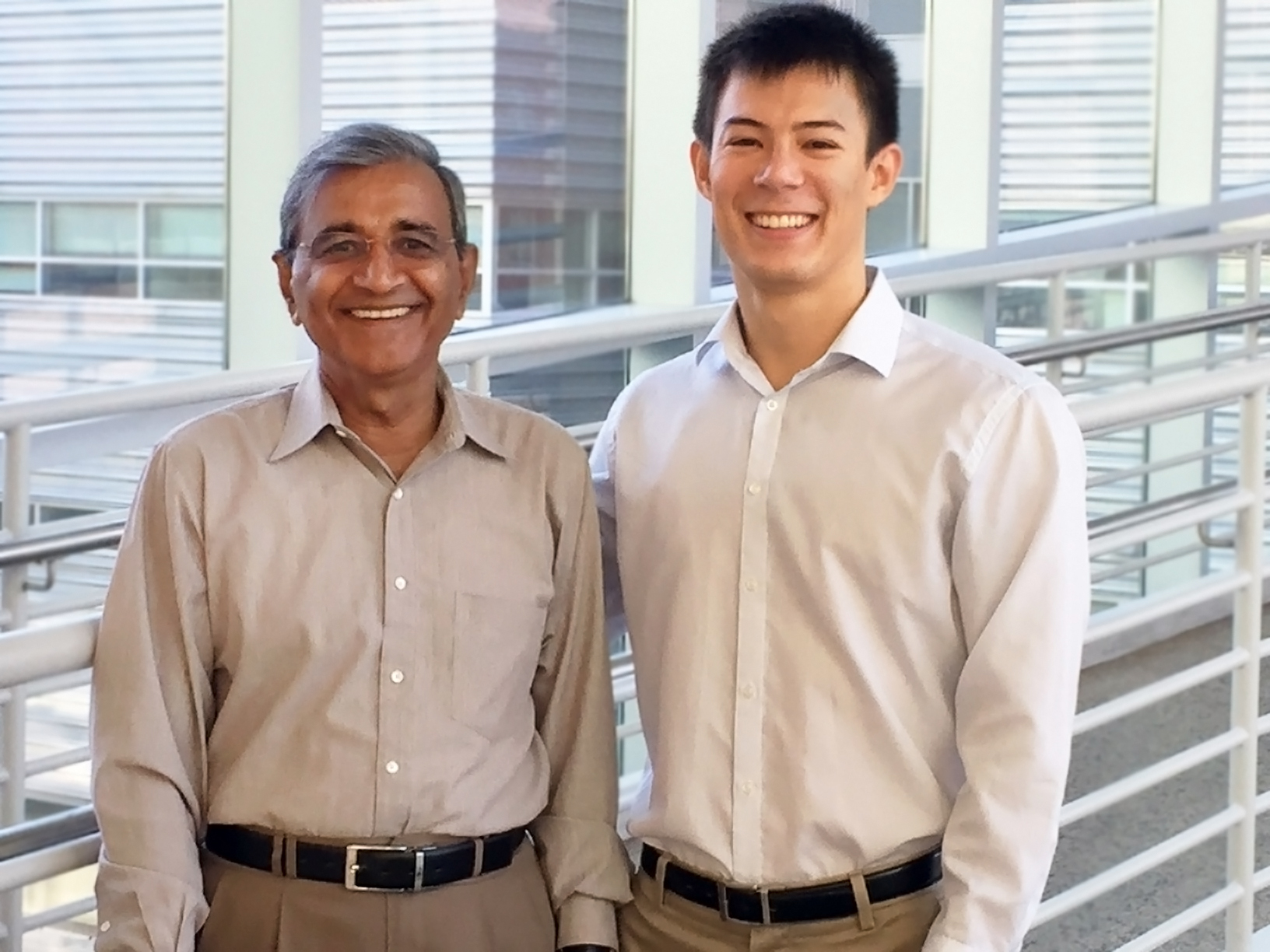
Bharat Bhushan, Ph.D., was on sabbatical at EPFL in Lausanne, Switzerland in 2005 when a transformation began.
After reading an article in a trade magazine on the lotus leaf’s water repellant properties, Bhushan’s industrial research launched down a greener, livelier new path.
“I became fascinated,” said Bhushan, Ohio Eminent Scholar and the Howard D. Winbigler Professor in the Department of Mechanical and Aerospace Engineering at The Ohio State University. “That article and my research in this area have transformed me from a science geek to a nature lover.”
Prior to 2005, Bhushan never dreamed he’d be studying lotus leafs or geckos or sharks or black skimmer birds, nor that supercomputers would help him do it all.
“I’ve been a beneficiary of the Ohio Supercomputer Center (OSC) for a long time; many of the things we’re doing wouldn’t be possible without it,” Bhushan said. “I’m an engineer by trade and had worked in various science and technologies prior to 2005 but had not done anything related to nature to that point.”
Bhushan was looking for surfaces that repel water and reduce friction, a major problem in the industry in which he had been involved. It turned out, nature had answers.
“Nature provides a wealth of information and uses basic materials,” he said. “We’re not trying to mimic nature, but we like to be inspired by nature.”
Recently, Bhushan’s research has focused on black skimmer birds and shark skin to understand drag reduction. For the first time, he discovered that the beak of black skimmers can reduce drag in water as reported in a Philosophical Transactions of the Royal Society paper in August 2016. Black skimmer birds are the only birds known to do fly fishing, in which they soar just above water and dip their beaks in to grab fish. Sharks, meanwhile, have skin perfectly evolved for drag reduction to cut through water at high speeds.
The secret to both black skimmer birds’ beaks and shark skins lies in the riblet structures that contain microgrooves aligned in the direction of fluid flow, allowing water to move efficiently over the surfaces. Studies have shown these riblet structures allow for drag reduction by controlling the vortices formed in turbulent flow.
This feature results in a drag reduction up to 10 percent when compared to even a smooth, flat surface. Bhushan’s lab uses computer modeling to explore drag reduction, dimensions of vortices and segmented riblet surfaces. Understanding these drag-reduction properties could improve air flow over cars and aircraft or fluid flow through pipelines for a more efficient transfer of oil, gas and coal.
To understand how riblet structures and vortices reduce drag, Samuel Martin, a Ph.D. candidate and co-author on Bhushan’s recent study, performed computer simulations on OSC’s Glenn and Oakley Clusters.
“Each simulation has a slightly different riblet geometry, such as different spacing or height,” Martin said. “By running simulations I see how water flows over these riblets and how the drag or the vortex formations are in these models and how riblets reduce drag.”
Martin creates numerous models to analyze riblet spacing, and each model needs to run for a long time to see how well the average drag performs.
“On a cluster, I can run multiple jobs parallel and get more data quickly,” Martin said.
Bhushan said without supercomputing capabilities the work couldn’t be done, but because it can, the clues he’s unlocking could be invaluable.
“Nature has 10 million species and each one has a unique structure that provides functionality we can use to our advantage,” Bhushan said. “It’s exciting to know what nature has to offer.”
###
Written by Ross Bishoff
Contact Bharat Bhushan, Ph.D., at bhushan.2@osu.edu or check out his lab's website at https://nlbb.engineering.osu.edu/. For a video on Dr. Bhushan's recent study, click here.
The Ohio Supercomputer Center (OSC), a member of the Ohio Technology Consortium of the Ohio Department of Higher Education, addresses the expanding computational demands of academic and industrial research communities by providing a robust shared infrastructure and proven expertise in advanced modeling, simulation and analysis. OSC empowers researchers with the vital services essential to make extraordinary discoveries and innovations, partners with businesses and industry to leverage computational science as a competitive force in the global knowledge economy, and leads efforts to equip the workforce with the key technology skills required to secure 21st century jobs. For more, visit www.osc.edu.